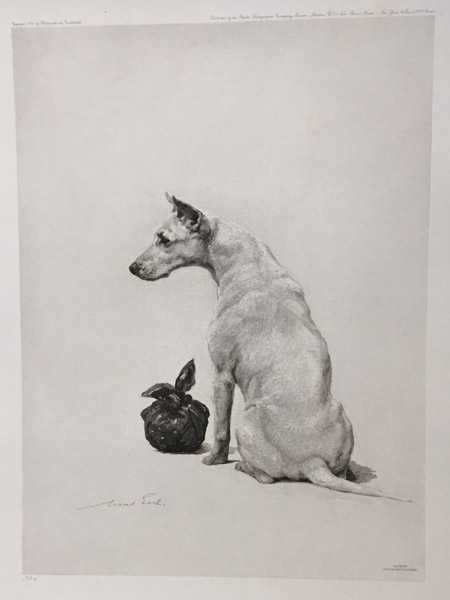
Bull Terrier
|
|
The Bull Terrier is closely associated with pre-Victorian England. A breed native to England, it was developed in the later years of the eighteenth century. Although it is a matter of conjecture as to exactly which breeds it was created from, it is more than likely that they included the Bulldog, the early smooth coated Black-and-Tan Terrier and the White English Terrier. The Bull Terrier of the early eighteenth century was a very strong and tenacious animal noted for great bravery. The Bulldog-Terrier cross created a dog which combined the alert agility of the Terrier with the strength and tenacity of the Bulldog. It was much leggier than the animal we know today and its head more closely resembled the early Bulldog. Of particular note were its ears. They were closely cropped so that in a fight they could not be bitten and torn by an opponent. Now an affectionate pet, the Bull Terrier was originally bred for baiting bulls as well as other animals, and for the dog fighting contests that passed for "sport" around the turn of the eighteenth and well into the nineteenth century. As with other Terriers of the period, the Bull Terrier was also sometimes used to kill rats, ratting contests being a popular diversion for the working classes. As offensive as it seems to modern dog fanciers, rat killing was a very popular amusement during the first half of the nineteenth century, and individual dogs were timed to determine how many rats they could kill in a given period. Writing in New Book of the Dog in 1907, Robert Leighton reports that Jimmy Shaw's Jacko could kill sixty rats in just three minutes. With the advent of dog shows in the mid nineteenth century, there was a desire on the part of certain breeders, most notably James Hinks of Birmingham, to improve the breed into something which would be more presentable for the show ring. Hinks selectively bred the old fashioned Bull Terrier with other breeds, including the White English Terrier, to create a breed with a longer head and a more symmetrical body. The arched back, bent legs and undershot jaw of the Bulldog were eventually eliminated. Moreover, the "Hinks breed," as it was first designated, was predominantly, if not all, white. Initially very controversial, it eventually became the accepted type. Once established, the white dogs became so fashionable that the colored variety was in danger of extinction, though luckily dog fanciers continued to breed both types. Early members of The Kennel Club, including S.E. Shirley, M.P., the founder of The Kennel Club, and E.W. Jacquet, the Kennel Club's historian, were active in the breed. While its popularity decreased with the anti-cropping laws passed in 1895, the breed eventually became well established in the show ring and as a pet. |
Home | About
the WS Gallery | Current
Exhibition | New
Additions | Search Our Inventory
| Commissioning Paintings | 19th
& 20th Century Oils | Contemporary
Artists | Works
on Paper & Collectibles | Books
| Christine Merrill
| Guest book | Email
Us
All images, designs and information on this site
are fully copyrighted © 1999
and may not be reproduced of used in any form or any manner, or displayed in
any way
on any website without the express written consent of The William Secord Gallery,
Inc.
William Secord Gallery, Inc.
29 West 15th Street 4th floor
New York, NY 10011
Between Fifth and Six Avenues
www.dogpainting.com
wsecord@dogpainting.com
Tel. 212-249-0075
212-249-0896
By appointment
